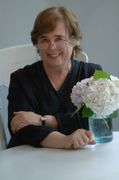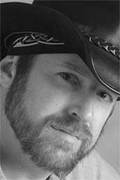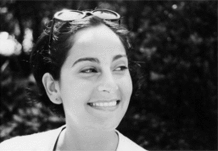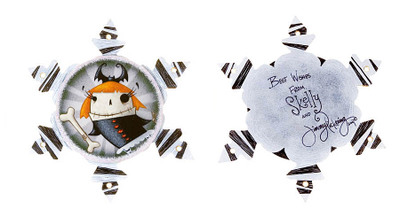

Jane Yolen and Adam Stemple published their first collaborative novel, Pay the Piper: A Rock ‘N’ Roll Fairy Tale, a couple of years ago and followed that up with a sequel, Troll Bridge: A Rock ‘N’ Roll Fairy Tale, which released in paperback over the summer. Jane is known far and wide and probably even in outer space as the "American Hans Christian Anderson," having written nearly 300 books and won pretty much every award you can win. Adam is a well-known musician (aka rock and roll star), poker player, and all around good guy; his debut novel Singer of Souls came out in 2005 and a sequel is in the pipeline from Tor as we speak. Oh, and in case you didn’t know already, Jane is Adam’s mother. They were nice enough to take the time to answer some questions about their collaborative efforts, so let’s get to the good part.
GB: First question is always process porn for the writers out there, so tell me about how you write solo. You can start at whatever part of the process you want–when an idea occurs to you, when you actually start writing, when the deadline’s looming, outlining/not outlining, etcetera. Does this change depending on the project or are your work habits fairly consistent?
JY: Every project is different for me. Let me tell you a story.
I once heard Norton Juster tell a group of third graders–my daughter among them–that he got his ideas from a postbox in Poughkeepsie. Some of the students thought he meant it. One boy even raised his hand and asked how far away Poughkeepsie was.
My daughter knew better. She knew from having lived with me all of her eight years. She knew that I got my ideas from everywhere: newspaper articles, other people’s books, magazines, rock lyrics, folk songs, overheard conversations, dreams, her life, her brothers’ lives, her father’s life, her great grandparents…oh, and gossip. Gossip is often the beginning of stories.
There is nothing a writer will refuse in the making of story. Here are a few of the places I have gotten ideas.
*Reading the local newspaper, I was riveted by a photo of a boy with his prize-winning frog named “Star Warts”. The boy’s smile was enormous, his frog-well–even more enormous. But I knew that it wasn’t frogs that were supposed to give you warts, it was toads. (Well, they don’t actually. It’s just a superstition.) But suddenly Commander Toad in Space was born, the idea of a ship called the Star Warts carrying a crew of amphibians was too funny to resist. I eventually did seven Commander Toad books and loads of reluctant readers began their reading with the Commander, Mr. Hop, Lieutenant Lily, and the rest.
*An editor friend called me up and said, “My son is three and hates to go to bed and he loves dinosaurs. Can you do anything for him?” Now Adam and his brother Jason had been the same at that age, so much so, that even though I’m a lousy seamstress and can’t sew a straight hem, I actually embroidered dino pillows for each of them. So for my editor’s son, instead of an embroidered pillow, I wrote How Do Dinosaurs Say Goodnight? The opening rhymes simply tumbled out and the book practically wrote itself.
*Because my husband took all our children birding, and staying out late at night owling was a particular pleasure they shared, I smooshed together (that’s a technical writing term!) all of their night journeys into the woods and wrote Owl Moon.
*I dreamed the actual first page of Wizard’s Hall (some 9 years before Harry Potter was published) and the strange opening of The Wild Hunt some years after that. The house in The Wild Hunt is the house we have in Scotland. And the house in the Tartan Magic books is the Scottish house plus its garden.
So you see, no post box in Poughkeepsie for me. I don’t wait for the mail to be delivered. I am always ready to listen at keyholes, sneak up next to people on buses and trains and planes, read and read and read, and shamelessly steal conversations, arguments, and jokes from my children and grandchildren. Because that’s where the ideas are.
And also remember that ideas are the LEAST important part of a book. They get you started, sure, but what comes after is much more interesting.
AS: The biggest thing I had to learn about writing, was figuring out early what form the idea I have is going to take. Is it a short story idea? A novel idea? A poem idea? It can be annoying if you start on a short story only to discover it's a novel; it's disastrous to get to the middle of a novel and realize your idea was only strong enough to support something shorter.
My work habits are not nearly as consistent as I'd like. I have traumatic brain injury, which presents like pretty severe ADD, so it's difficult for me to get started. But if I can force myself to sit at the computer and stare at a page for ten minutes, I usually don't get back up until I've written 1,000-2,000 words.
Usually, when I write, I have a scene in my head toward the end of the book/story that I aim for. In Singer of Souls, it was Douglas striding into Faery, in one story, A Piece of Flesh, it was young Victoria cooking soup in a boot, in another, The Three Truths it was Master Shichiro, a troubled samurai, commiting seppuku to protect his lord. These scenes kept me writing, gave me a direction to travel in whenever I was stuck. Now, what's funny is that in only one of these tales did I actually get to that scene. Stories change and grow as you write them--at least they always have for me. No matter how hard I try to control them, the characters eventually take over, sometimes refusing to go down that dark alley you present them--Master Shichiro does not end up killing himself--sometimes getting so beaten down by events that they fail when presented with heroic opportunities--Douglas doesn't stride manfully into Faery, but rolls in beaten and bloody, and the decisions he makes once there are questionable at best.
GB: Now I'd like to know how you've worked together collaboratively, including all the nitty gritty like how you avoided killing each other in revision. And Jane, I know you have collaborated with lots of people, so was there anything different about working with your son? Adam, likewise for you, you're a musician and very used to collaboration--do you think that made it easier to work with someone else?
JY: Well, this is from a speech we are just working on now:
All stories are collaborations--between author and editor, between author and reader. However we two have collaborated even more, by being mother and son, as well as co-writers. That means we share a history, have attitudes toward each other and toward work that are...complicated and rich, and we know which buttons to push.
And yet, we come to our writing from different places and different spaces. When we work, we may argue about characters, about word choices, about titles. Sometimes Adam gives in and sometimes I do. But it is always done with respect--for one another, and for the work.
Writing with a relative means walking a fine line. In the end, my relationship with Adam is more important to me than the work, and I will back off if we hit some immovable spot. But so far we have agreed more often than disagreed, and I love the way he writes.
AS: Being a working musician for twenty years has made everything about writing easier. A literary agent I knew who was also in a punk band, once said, "Why do authors complain about bad reviews? When I get a bad review it's in the form of a beer bottle thrown at my head." Writers complain about contracts; the only thing sure in the music business is that if you have a contract you MIGHT get paid. Collaborations among musicians are shaky at best, with egos always at the forefront. Additionally, education and work habits are at a premium in the land of musicians; we didn't join a band to work hard and do a lot of thinking. And if there are musicians reading this who are insulted by this, please remember that I count myself in your number–when I say I don’t like working with musicians…
Oh, and congratulations on reading!
All kidding aside, I learned how to write by working with my mother. She is a wonderful writer/teacher/editor/mom. We rarely argue over what we’re working on because we largely share the same sensibilities. Makes sense, I am her son after all.
GB: What would your advice be to people working on collaborative projects? There seems to be a lot of this going on in the children’s/YA field at the moment.
JY: Talk about stuff before you begin–like whose name goes first, who has the final pass on the book, how to resolve arguments. Know what your strengths are (mine are dialogue, scene, theme. He is Mr. action, Mr. Funny, and Mr. Plot. Also anything really dark in our books and stories–blame Adam!)
AS: Respect your partner and their ideas, and be respectful to them. Make sure you are writing the same book. Talk often and listen more. Meet in person to plot the book, talk about characters, polish a theme. And in person is important. We communicate more than we know with body language, and when discussing–flighty things that can be tough to get hold of–it is important to get as much across as possible.
GB: Switching gears a bit, what artform or genre do each of you find it most enjoyable to work in and why? Or if enjoyable’s not of interest, how about what’s most challenging?
JY: I love writing picture books, fantasy, historical, poetry, and graphic novels. You won’t find me doing hard science, blood and intestine spills, or Gossip Girls.
AS: I do most of my writing in fantasy, so I must like working it. But truth be told, I like writing everything. I read a lot of fantasy, and love it, so I am familiar with the tropes and it is easy for me to move around in that kind of world. But I loved writing my historical samurai mystery stories as well. Research intensive as they were, they presented an opportunity to learn and a set of challenges unique to their genre (are you saying you haven’t heard of the thriving Historical/Samurai/Mystery genre?) that made me enjoy writing them as well. I just like writing.
GB: What are each of your next projects (any more collabs on the horizon)?
JY: We have a book called Bug which stands for Big Ugly Guy and is a novel about a Jewish kid who is picked on at school. So he makes a golem for protection that becomes the drummer in his klezmer garage band.
On my own–I have just finished a 92,000 fantasy novel, Dragon’s Heart, fourth book in my Pit Dragon trilogy (don’t laugh.) Did a nonfiction book called Bad Girls with daughter Heidi and we are in the revision process. And starting a picture book called Shortstop about Honus Wagner.
AS: I’m currently working on what my writer’s group calls a "Big Epic Fantasy." My mother and I seem to have an offer upcoming on another rock ‘n’ roll fairy tale, this one about a Jewish garage band that create a golem mostly to play the drums.
GB: What are some things you’ve read or listened to or watched recently that you’d recommend to others?
JY: Adam’s sequel to his first book is called Steward of Song and will be out in March. Brilliant. Patricia MacLachlan’s Edward’s Eyes is incredibly moving. I was fascinated by Brian Selznick’s The Invention of Hugo Cabret though not entirely in love with it. And then I just read the latest Ian Rankin’s Rebus mystery novel because I am a big fan.
AS: Been very delinquent on my reading lately, though I can highly recommend Bobby Clark’s The Baffled Parent’s Guide to Coaching Youth Soccer, though probably only if you’re going to start coaching youth soccer. Saw Michael Clayton last night and recommend it highly.
Visit today’s other WBBT stops:
Loree Griffin Burns at Chasing Ray
Lily Archer at The Ya Ya Yas
Rick Riordan at Jen Robinson’s Book Page
Gabrielle Zevin at Seven Impossible Things Before Breakfast
Dia Calhoun at lectitans
Shannon Hale at Miss Erin
Alan Gratz at Interactive Reader
Lisa Yee at Hip Writer Mama
 – I don’t think I need to explain this one.
– I don’t think I need to explain this one.

 – I adored The Seas.
– I adored The Seas. – Like Colleen, I’m unbelievably excited about this one. Jenny has the best taste in YA since, well, ever, and that can be nothing but a good sign. Plus, with a title like that, you really can’t go wrong.
– Like Colleen, I’m unbelievably excited about this one. Jenny has the best taste in YA since, well, ever, and that can be nothing but a good sign. Plus, with a title like that, you really can’t go wrong.




